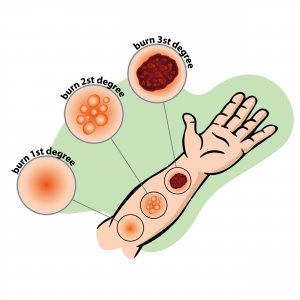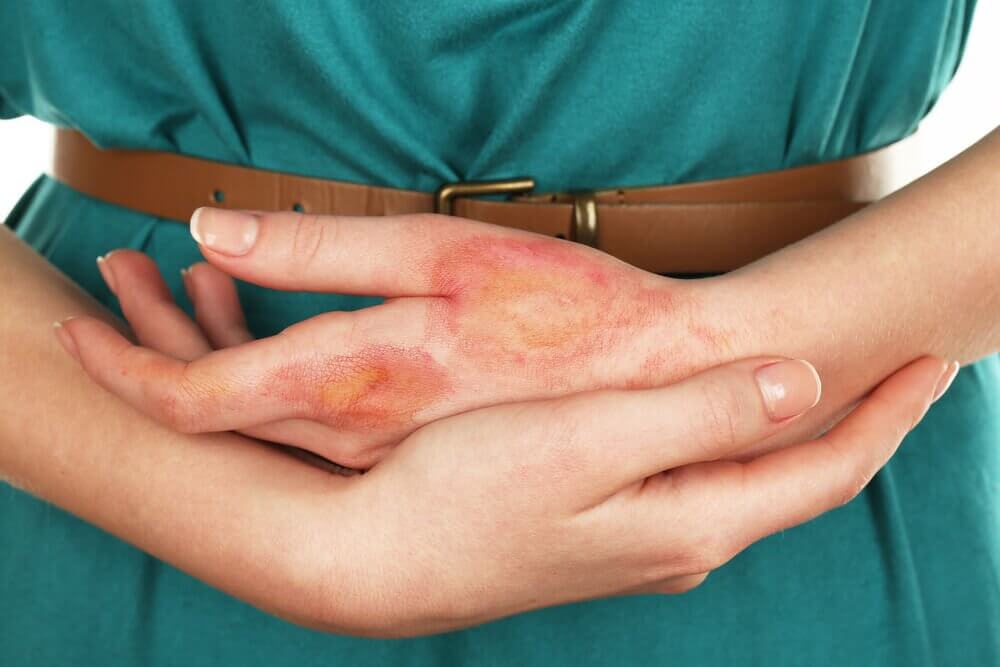How to Use Baking Soda for Burns

Many people are exposed to some kind of burn almost every day, with different causes and levels of severity. Today, we’ll take a look at several ways to use baking soda for burns.
Types of burns and their symptoms

There are different types of burns with different levels of severity.
Among the three main classes are:
- First degree burns: These only affect the outermost layer of the skin. The most common symptoms are pain, redness, and swelling.
- Second degree burns affect the outermost layer and the next layer underneath. Symptoms include burning, pain, redness, swelling, and blisters. They’re also known as partial thickness burns.
- Third degree burns affect the deep layers of the skin. They are also called full thickness burns. Symptoms include whitish, dark, or charred skin. The area may be numb.
There are also two other classifications of burns:
- Minor burns: These are typically first degree burns on any part of the body. A second degree burn that is less than two to three inches (five to seven centimeters) wide also is included in this type.
- Major burns: These include second or third degree burns on the hands, feet, face, groin, or critical joints.
Also read: What to Do after a Burn
Recommendations
It’s possible for a person to have multiple types of burns at the same time.
Severe burns require immediate medical attention. This can help prevent scarring, disabilities, or disfigurement. Burns on the face, hands, feet, and genitals can be particularly severe.
- If this type of injury occurs in the home, immediately pour cold water over the affected area for at least five minutes. You can also submerse the area in a tub or bucket filled with cold water.
- Always avoid applying ice directly to a burn, as it will have the opposite effect of relieving pain. The cold temperature will cause your skin to burn even more.
- Great care must be taken when cleaning a burn wound. If you have blisters, make sure not to break them.
- If you’re going to travel to an area where the sun is especially strong, be sure to use sunblock to keep your skin protected from harmful UV rays.
Baking soda for burns

For mild first degree burns, home remedies can be used with ingredients that you already have in your pantry or that don’t cost a lot of money.
Baking soda has become famous in both cooking and natural medicine. This white powder is cheap and available nearly everywhere.
You might already have it in your kitchen and still don’t know how useful it may be. Overall, it stands out for its healing and cleaning properties.
Since baking soda is a non-aggressive, natural exfoliant, it can help eliminate dead skin cells that have been burned. This will also allow your skin to heal while keeping the area clean and soft.
There are two ways to take advantage of this excellent option.
1-Baking soda for burns
The first thing you’ll do is make a paste with baking soda and water. Remember that the amount you use will depend on the extent of the burn.
Ingredients
- 1 tablespoon (9 g) of baking soda
- 5 tablespoons (75 ml) of water
What should you do?
- Mix both ingredients until you get a slightly thick paste.
- Apply it to the areas that are burned, being careful not to cause any additional damage to the skin.
- Leave it on for 20 minutes and then rinse with plenty of cold water.
2-Baking soda bath
In this case, you’ll use your bathtub to apply the baking soda treatment for burns.
Ingredients
- Water (as much as needed)
- ¼ cup (37 g) of baking soda
What should you do?
- Fill a container where you can soak the affected area (if several parts of the body are burned, the use of a bathtub is recommended) with cold water and add the baking soda.
- Soak for half an hour and then rinse with more cold water.
The most important thing is to follow the recommendations mentioned above.
There are many ways to avoid getting burned and prevent scarring from burns. Remember that if the burn is severe, you should go directly to a hospital.
This text is provided for informational purposes only and does not replace consultation with a professional. If in doubt, consult your specialist.








